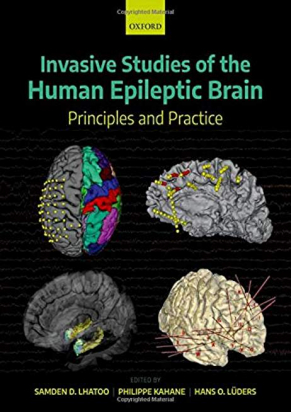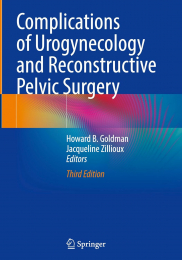Non ci sono recensioni
DA SCONTARE
No other neurological condition allows the same opportunities for an intracranial electrophysiological study of the human brain as epilepsy does. Epileptic surgery is designed to remove the epileptic focus from the human brain, thereby effecting either cure or substantial reduction of seizures in an individual with an otherwise intractable condition. Its use as a treatment modality dates from the late 19th century, and it has become a widely used treatment option throughout the world in the last 20-30 years. The complexity of epilepsy cases in surgical centres, and the need for invasive electrode studies for pre-surgical evaluation, are both greatly increasing.
Invasive Studies of the Human Epileptic Brain is the definitive reference text on the use of invasive electroencephalographic (EEG) diagnostic studies in human epilepsy. Written by some of the most renowned epilepsy experts of the 20th and 21st centuries, the authors provide their expertise and insights into the identification and mapping of intracranial epileptiform and non-epileptiform activity, mapping of the human brain function, and approaches in the use of invasive electroencephalography in a variety of clinical situations.
The book is organized into an easily readable series of chapters and is brilliantly illustrated with case studies; each providing an intuitively comprehensive approach to invasive brain studies.
Section 1: General overview
1: History of invasive EEG, Hans O. Lüders
2: Principles of invasive EEG, Samden D. Lhatoo, Nuria Lacuey, and Philippe Ryvlin
3: Technical and practical aspects of invasive recordings and brain stimulation, Gholam K. Motamedi, Jean Gotman, and Ronald P. Lesser
4: Subdural grid electrode placement: Approaches and complications, Robert A. McGovern and Guy M. McKhann II
5: Depth electrodes: Approaches and complications, Thomas Ostergard and Jonathan P. Miller
Section 2: Identifying and mapping epileptiform and non-epileptiform activity
6: Physiological activity and artifacts in the human epileptic brain studied with intracerebral depth electrodes EEG, Birgit Frauscher and François Dubeau
7: Physiological activity and artefacts in epileptic brain in subdural EEG, Beate Diehl and Catherine A. Scott
8: The irritative zone and seizure onset zone in subdural EEG, Sebastian Bauer and Felix Rosenow
9: The irritative, epileptogenic and ictal onset zones in depth EEG, Fabrice Bartolomei
10: The irritative zone and seizure onset zone in acute ECoG: The quest for relevant epileptogenic tissue, André Palmini and Eliseu Paglioli
11: High frequency oscillations (HFO), Julia Jacobs
12: Direct current shift recordings, Shasha Wu, Vernon L. Towle, Jonathan P. Miller, and Hans O. Lüders
13: Electrical stimulation for the mapping of the epileptogenic zone, Patrick Landazuri and Lorella Minotti
14: Invasive EEG and hippocampal sclerosis, Jerome Engel, Jr., Richard Staba, and Itzhak Fried
15: Invasive EEG in cortical dysplasia, Laura Tassi and Roberto Mai
16: Invasive EEG in tumoral epilepsy, Francine Chassoux, Elisabeth Landré, and Bertrand Devaux
17: Invasive EEG in tuberous sclerosis, A. Simon Harvey
18: Invasive EEG in gray matter heterotopia, Roberto Mai and Laura Tassi
19: SEEG in polymicrogyria: When and how?, Louis Maillard and Georgia Ramantani
20: Invasive EEG in hypothalamic hamartoma, Julia Scholly, Fabrice Bartolomei, and Edouard Hirsch
Section 3: Invasive EEG approaches in specific clinical situations
21: SEEG in temporal lobe epilepsy, Anne-Sophie Job-Chapron, Lorella Minotti, Dominique Hoffmann, and Philippe Kahane
22: Subdural EEG in temporal lobe epilepsy, Stephan U. Schuele
23: SEEG in frontal lobe epilepsy, Aileen McGonigal and Patrick Chauvel
24: Subdural EEG in frontal lobe epilepsy, Akio Ikeda
25: SEEG in the posterior cortex epilepsies, Stefano Francione, Alexandra Liava, and Francesco Cardinale
26: Subdural EEG in posterior cortex epilepsy, Americo C. Sakamoto, Tonicarlo R. Velasco, and Jorge Gonzalez-Martinez
27: Invasive EEG investigation of the insula, Philippe Ryvlin and Fabienne Picard
28: Depth EEG in sensorimotor cortex epilepsy, Bertrand Devaux, Francine Chassoux, Elisabeth Landré, and Baris Turak
29: Invasive studies of sensory motor cortex epilepsy, Jonathan Edwards, Ekrem Kutluay, and William A. Vandergrift
Section 4: Human brain mapping
30: Human brain mapping using subdural electrodes, Stephanie Gollwitzer and Hajo M. Hamer
31: Intracranial event-related potentials, Milan Brázdil, Pavel Jurák, and Ivan Rektor
32: Cortico-cortical evoked potential mapping, Riki Matsumoto and Takeharu Kunieda
33: Dynamic spectral imaging: Online and offline functional brain mapping using high-frequency activity [50 Hz – 150 Hz] in SEEG, Jean-Philippe Lachaux
Section 5: Therapy using invasive EEG
34: Thermocoagulation of the ictal onset zone using SEEG (thermo-SEEG), Marc Guénot and Pierre Bourdillon
35: Therapeutic stimulation of the ictal onset zone, Mathieu Sprengers, Sofie Carrette, Kristl Vonck, and Paul Boon
Section 6: Special techniques and future prospects
36: Simultaneous macro- and micro-recordings, Michal T. Kucewicz, B. Michael Berry, and Gregory A. Worrell
37: Fast analytical sensing technology: Microelectrode-based recordings of tonic and phasic neurotransmitter signaling in the mamalian brain, Michelle L. Humeiden, Jorge E. Quintero, John T. Slevin, and Greg A. Gerhardt
38: Mapping of seizure networks, Olivier David
39: SEEG recordings: From signal processing to models of epileptogenic networks, Fabrice Wendling, Pascal Benquet, and Fabrice Bartolomei




